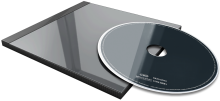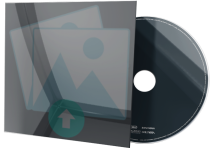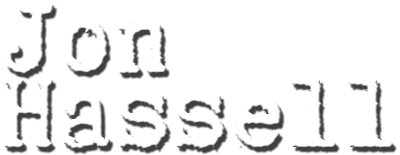Cover NOT yet available in
Join Patreon for 4K upload/download access
Your Rating (Click a star below)
![]()
![]()
![]()
![]()
![]()
![]()
![]()
![]()
![]()
![]()
Track List
01) Toucan Ocean
02) Viva Shona
03) Hex
04) Blues Nile
05) Vernal Equinox
06) Caracas Night September 11, 1975
01) Toucan Ocean
02) Viva Shona
03) Hex
04) Blues Nile
05) Vernal Equinox
06) Caracas Night September 11, 1975
3:58
7:10
6:31
10:07
22:05
2:13
Data Complete
 80%
80%
Total Rating
 80%
80%Total Rating
![]() (2 users)
(2 users)
Back Cover![]()
CD Art
3D Case
3D Thumb
3D Flat
3D Face
3D Spine
First Released
![]() 1977
1977
![]() Jazz
Jazz
![]() Enlightened
Enlightened
![]() International
International
![]() ---
---
![]() Medium
Medium
![]() Album
Album
![]() 0 copies
0 copies
Album Description
Available in:
Recorded in 1976 at the York University Electronic Media Studios in Toronto, Ontario, Vernal Equinox is Jon Hassell's first recording as a solo artist and sets the stage for his then-emerging career as a trumpeter, composer and musical visionary.
"Toucan Ocean" opens the album with two gently swaying chords and delicate layers of percussion that provide a cushion upon which Hassell unfurls long, winding melodic shapes. His trumpet is sent through echo and an envelope filter, producing a stereo auto-wah-wah effect.
"Viva Shona" features accompaniment by mbira, subtle polyrhythmic layers of percussion, and the distant calling of birds. Again filtered through echo, Hassell's gliding trumpet lines sound remarkably vocal.
"Hex" features a bubbling, filtered electric bass part with a denser web of percussion. From his horn, Hassell elicits moans and sighs that are at first unaffected and later filtered.
"Blues Nile" is a long, blue moan. Hassell's breathy, multi-tracked trumpet lines call and respond to one another, weaving a web of deep calm over an ever-present drone. This track clearly points the way to his later work with Brian Eno, in particular, their "Charm Over Burundi Sky."
On the title track, Hassell's "kirana" trumpet style is in full bloom as he dialogs with the percussion. Hassell's most elegant melodicism blossoms forth here, and his unaffected horn often sounds disarmingly flute-like. The influences of his study of raga with Pandit Pran Nath are clearly discernible in the curvaceous melodic lines and overall sense of meditative calm within harmonic stasis. Throughout the album, percussionists Naná Vasconcelos and David Rosenboom add subtle, supple grooves and colors.
"Caracas Night September 11, 1975" is a beautiful field recording featuring Hassell's plaintive trumpet commentary, subtle percussion interjections, and the sound of caracas humming and buzzing in the background.
The first several tracks of Vernal Equinox bear the imprint of '70s-period Miles Davis, in particular the quiet ambience of "He Loved Him Madly" and parallel passages from Agharta.
The envelope filter on Hassell's horn similarly draws a reference to Davis' use of the wah-wah pedal from that time. Nonetheless, in 1976, Vernal Equinox was remarkably unique and ahead of its time, and sowed the seeds of Hassell's influential Fourth World aesthetic, which he would continue to develop and refine.
Decades after its release, Vernal Equinox still provides an enchanting and entirely contemporary listening experience.
Recorded at the York University Electronic Media Studios (Toronto, Ontario), October/November 1976.
Mixdown and additional recording: Mastertone Recording Studios (New York), September/October 1977.
Design – By Design (2)
Edited By , Mastered By – Allan Tucker
Engineer – Rich LePage
Engineer – Andy Jerison, David Rosenboom, Michael Brook
Producer – Jon Hassell
©1978 Nyen Music (ASCAP)

User Album Review
Jon Hassell’s 1980 album Fourth World, Vol. 1: Possible Musics, produced alongside Brian Eno, is perhaps the most common entry point in the trumpeter’s catalog, arriving during the latter’s ascendance as a pop theorist and alchemist. But Hassell’s 1977 debut contains many of the same ideas in a more muted and subtle form. Inspired by raga music, particularly the work of the vocalist Pandit Pran Nath, Hassell processes his trumpet sound and focuses on notes that change in tiny increments, giving his melodies a slippery quality where you’re never quite sure where they are coming from or where they might go next. The background is filled with quiet twitches of rattles and bells, gurgling talking drum, and snippets of bird songs, creating a bed of sound that is hard to pin down but easy to absorb as a whole. Sources stretch in all directions, from the “Shhh/Peaceful” jazz of Miles Davis to Indian classical music to twinkling New Age, but the music’s refusal to be any one thing makes each listen feel like the first one. –Mark Richardson
External Album Reviews
None...
User Comments


Available in:
Recorded in 1976 at the York University Electronic Media Studios in Toronto, Ontario, Vernal Equinox is Jon Hassell's first recording as a solo artist and sets the stage for his then-emerging career as a trumpeter, composer and musical visionary.
"Toucan Ocean" opens the album with two gently swaying chords and delicate layers of percussion that provide a cushion upon which Hassell unfurls long, winding melodic shapes. His trumpet is sent through echo and an envelope filter, producing a stereo auto-wah-wah effect.
"Viva Shona" features accompaniment by mbira, subtle polyrhythmic layers of percussion, and the distant calling of birds. Again filtered through echo, Hassell's gliding trumpet lines sound remarkably vocal.
"Hex" features a bubbling, filtered electric bass part with a denser web of percussion. From his horn, Hassell elicits moans and sighs that are at first unaffected and later filtered.
"Blues Nile" is a long, blue moan. Hassell's breathy, multi-tracked trumpet lines call and respond to one another, weaving a web of deep calm over an ever-present drone. This track clearly points the way to his later work with Brian Eno, in particular, their "Charm Over Burundi Sky."
On the title track, Hassell's "kirana" trumpet style is in full bloom as he dialogs with the percussion. Hassell's most elegant melodicism blossoms forth here, and his unaffected horn often sounds disarmingly flute-like. The influences of his study of raga with Pandit Pran Nath are clearly discernible in the curvaceous melodic lines and overall sense of meditative calm within harmonic stasis. Throughout the album, percussionists Naná Vasconcelos and David Rosenboom add subtle, supple grooves and colors.
"Caracas Night September 11, 1975" is a beautiful field recording featuring Hassell's plaintive trumpet commentary, subtle percussion interjections, and the sound of caracas humming and buzzing in the background.
The first several tracks of Vernal Equinox bear the imprint of '70s-period Miles Davis, in particular the quiet ambience of "He Loved Him Madly" and parallel passages from Agharta.
The envelope filter on Hassell's horn similarly draws a reference to Davis' use of the wah-wah pedal from that time. Nonetheless, in 1976, Vernal Equinox was remarkably unique and ahead of its time, and sowed the seeds of Hassell's influential Fourth World aesthetic, which he would continue to develop and refine.
Decades after its release, Vernal Equinox still provides an enchanting and entirely contemporary listening experience.
Recorded at the York University Electronic Media Studios (Toronto, Ontario), October/November 1976.
Mixdown and additional recording: Mastertone Recording Studios (New York), September/October 1977.
Design – By Design (2)
Edited By , Mastered By – Allan Tucker
Engineer – Rich LePage
Engineer – Andy Jerison, David Rosenboom, Michael Brook
Producer – Jon Hassell
©1978 Nyen Music (ASCAP)
User Album Review
Jon Hassell’s 1980 album Fourth World, Vol. 1: Possible Musics, produced alongside Brian Eno, is perhaps the most common entry point in the trumpeter’s catalog, arriving during the latter’s ascendance as a pop theorist and alchemist. But Hassell’s 1977 debut contains many of the same ideas in a more muted and subtle form. Inspired by raga music, particularly the work of the vocalist Pandit Pran Nath, Hassell processes his trumpet sound and focuses on notes that change in tiny increments, giving his melodies a slippery quality where you’re never quite sure where they are coming from or where they might go next. The background is filled with quiet twitches of rattles and bells, gurgling talking drum, and snippets of bird songs, creating a bed of sound that is hard to pin down but easy to absorb as a whole. Sources stretch in all directions, from the “Shhh/Peaceful” jazz of Miles Davis to Indian classical music to twinkling New Age, but the music’s refusal to be any one thing makes each listen feel like the first one. –Mark Richardson
External Album Reviews
None...
User Comments

No comments yet...

